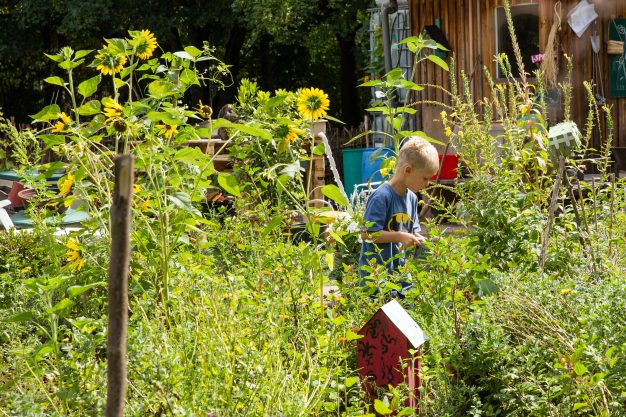
Nurturing nature in urban schools for enhanced learning
Imagine being a school student and having to focus on learning and studying during this time. Being an attentive student can be difficult at the best times let alone with the backdrop of so much global unrest and concern about health and safety.
Then let’s not forget the added pressure of online learning. In the 2021 Mission Australia report of more than 20,000 young people, mental health, academic ability and COVID-19 were reported by young people as key barriers to achieving their study or work goals, say Krystyna Gilowska, Professor Dianne Vella-Brodrick and Story Producer: Nerissa Hannink, of the University of Melbourne.
Other issues of general concern included COVID-19 and the environment. The bottom line is that young people care about their future and the environment and are having to overcome many more barriers to ensure their education is not compromised.
‘Research is exploring the role of nature in learning’
But how well equipped and supported are they to face these challenges? It’s now more important than ever for students to find ways to manage their responses to these concerns so that they can maintain healthy functioning, including at school.
And research is exploring the role that nature can play in providing students with some mental respite.
Nature has been found to have restorative properties that can enhance wellbeing and mental health, including cognitive functioning. This has led to growing interest in understanding the extent to which exposure to nature can influence learning, particularly in school students.
It would seem, however, that in stark contrast young people are choosing to spend much of their leisure time immersing themselves in technology and reducing their time in nature. This means that finding ways for young people to connect with nature during school time may be important.
The role that schools can play to expose students to nature becomes even more relevant if nature can be shown to improve learning. Our recently published work in Educational Psychology Review sets out to explore the nature-cognition link with school children aged five to 18 years.
‘Interventions included park walks, green walls and outdoor green areas’
We conducted a systematic review, including 12 experimental studies, all with comparison groups like non-green classrooms or built outdoor spaces, to better understand the types of nature intervention and how effective these are in improving attention and memory which can aid learning.
Nature interventions included park walks, greening up indoor areas with plants or green walls, playing in outdoor green areas of the school as well as gardening. In some instances, nature played a passive, background role where students could view it from a classroom window.
In other instances, nature was the primary focus and students actively interacted with it, for example, gardening as part of science classes. The duration of the nature exposure also varied from less than an hour to several months.
Our review found strong support for nature interventions improving attention and working memory.
For example, time in nature improved concentration, processing speed and knowledge retention. The results were similar for both the passive and active nature interventions as well as for the shorter or longer duration interventions.
What this means is that nature exposure can help to enhance processes like attention and memory, which are critical for learning.
Many teachers will tell you that keeping students focused and engaged with learning can be challenging, so creating opportunities for students to spend time in or view nature can be an effective way to improve the attention of school children and improve working memory as well.
There are multiple associations with this positive nature-cognition relationship. Nature can lift our mood and wellbeing, helping students to become more willing and open to learning.
Nature can also restore cognitive functioning, permitting a fresh mindset for learning as well as reducing stress levels and physiological arousal, allowing more focused learning. Schools are ideally placed to enable students to experience ‘green’ educational settings as students spend a large portion of their time at school. Irrespective of whether the school environment is naturally green, schools can still create their own nature zones with limited resources.
Examples include building green walls or herb gardens and growing plants in classrooms. The effort will be well worth it as time in nature can enhance learning goals. Our review is pointing to the likelihood that engaging with nature at school will relieve cognitive overload and stress as well as optimise wellbeing and learning.
‘Schools and young people need to collaborate’
The study included intervention studies with comparison groups, enabling us to conclude that exposure to nature does lead to improved attention and memory for school children in most of the studies we reviewed.
While more research in this field is encouraged, it’s safe to say that school planners, school leaders, teachers and young people need to collaborate to strategically design the school curriculum and student experience so that it includes more nature exposure for students.
No doubt this will provide welcome relief for students who are struggling to cope with all the learning demands of school and technology. But it can also provide an outlet for students to express their care for and interest in protecting our natural environment.
Published under Creative Commons Licensing. This article was first published on Pursuit, The University of Melbourne. Read the original article





